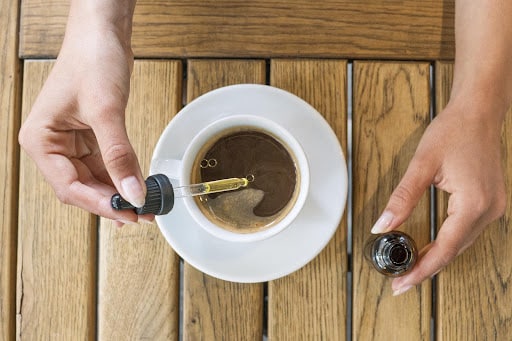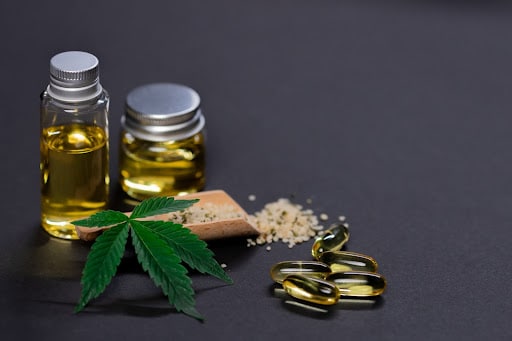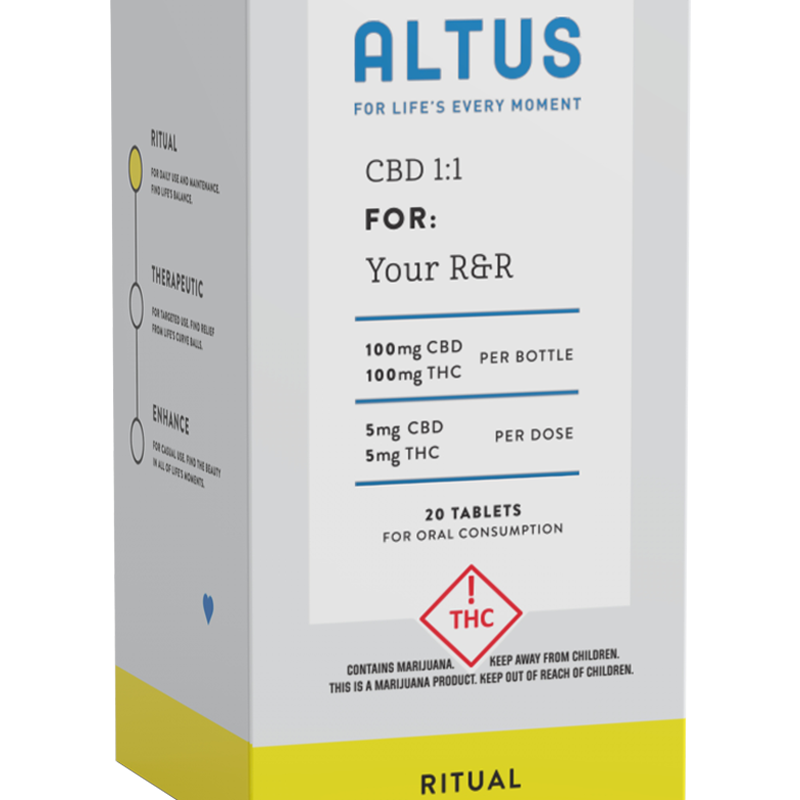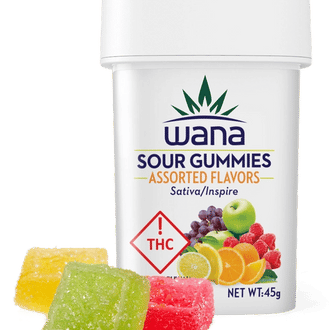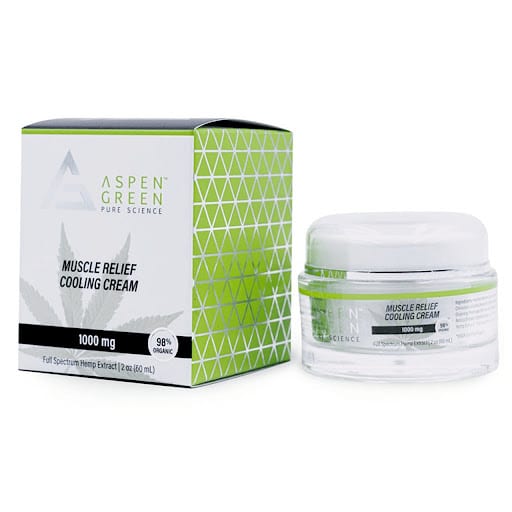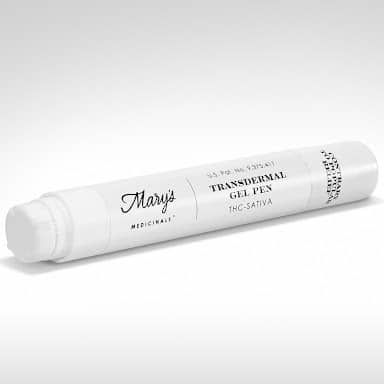Timing Your Dose: How Different Cannabis Products Reduce Pain
by Katherine Golden, RN – Founder and CEO of Leaf411
You have options when it comes to cannabis dosing
Whether you’re looking at CBD hemp or cannabis containing higher levels of THC, you have several different routes of administration to choose between:
- Inhalation (smoking, vaping): Takes effect immediately and lasts 2-4 hours. This is a great choice for instant relief and for treating breakthrough pain (a flare-up in pain). You can also layer inhaled cannabis with a longer-acting method to help get you through the night.
- Transdermal (patches, gels): Extended release option that takes effect quickly, since the cannabinoids are absorbed directly into your bloodstream. The time of onset is rapid, sometimes within 20 minutes. Transdermal products provide a consistent dose of medicine for up to 12 hours. The transdermal patch or gel is used on an area where the veins are near the skin’s surface—like the inside of your wrist or on your ankle.
- Sublingual (placed under the tongue): Sublingual administration can provide rapid relief, however, there are few true oromucosal (sublingual) products on the market. Cannabinoids are fat-soluble and, in their natural state, do not absorb well into the oral mucosa. Moreover, cannabis products are often extracted into oils, and these products are not water-soluble. Patients often expect rapid onset when using tinctures, only to wait 1-3 hours for the dose to take effect. Many products marketed as tinctures will end up being swallowed and absorbed via the digestive system, regardless of how long they are held under the tongue. A true sublingual (a product in which the cannabinoids are formulated to be more water-soluble) absorbs rapidly into the mouth. The effects can be perceived in 15-20 minutes and can last 4-6 hours.
- Edibles (gummies, capsules): Edibles take effect in between 30 minutes and 2 hours. You’ll feel their effects between 5-8 hours. They provide a discreet, portable long-acting option.
- Topicals (creams, salves): Topicals provide short-term localized relief. They can take effect within minutes, and may last for up to an hour.
It may take some trial-and-error to determine just which type of product works for you. In fact, you may discover that there are different routes of administration for different symptoms you are experiencing. For assistance identifying what works for you, contact a cannabis-trained nurse at Leaf411.
The Leaf411 cannabis nurse hotline, chat and scheduled nurse guidance call services provide education and directional support to the general public about the safe use of cannabis. We partner with select business members who meet our rigorous standards to extend our education and outreach efforts.

How to Dose Cannabis: Start Low and Go Slow
Dose sizing can be complicated
by Katherine Golden, RN – Founder and CEO of Leaf411
You may remember when the U.S. government sought to simplify food labeling. This was done to make the connection between serving sizes and calories more clear. Confusion around serving size was causing many people to eat or drink a lot more calories than they realized.
Today, we are at a similar spot when it comes to cannabis products, especially edibles. Some manufacturers put the per-dose strength on the product label and some do not. For example, the package might say “10mg CBD/5mg THC.” However, other manufacturers may put the total amount of THC and/or CBD for the entire package instead.
Also, laws restricting the amount of THC per edible vary between states that have legalized cannabis. Limits may also be different depending on whether the product is designed for recreational or medical consumer sales. For example, Colorado’s suggested serving size for an edible is 10mg which would be far too much THC to consume for a first time user.
How do you get the dose you want?
- If you are unsure about the product strength, ask your budtender for help understanding the amount that is in the product before purchasing. Does the package labeling show the amount of THC and CBD per dose, or does it show the amount in the entire package?
- Check in with our Leaf411 nurses. We’ll help answer your questions about product labels and doses. We can also suggest a good starting point based on your individual needs and goals.
- Start low and go slow when trying any new product. The Leaf411 nurses always suggest starting with an amount below the suggested serving size for safe consumption. You may not feel an immediate change or symptom relief. However, starting low and moving up slowly will ensure you do not over consume for your body’s tolerance or specific needs.
- Understand that some product types act more quickly than others. For example, vaping provides more immediate short-term impact, while edibles can take a few hours to take effect. We’ll explain this in detail as we review different types of products below.
It may take some exploring for you to find your favorite method of consuming cannabis or CBD hemp.
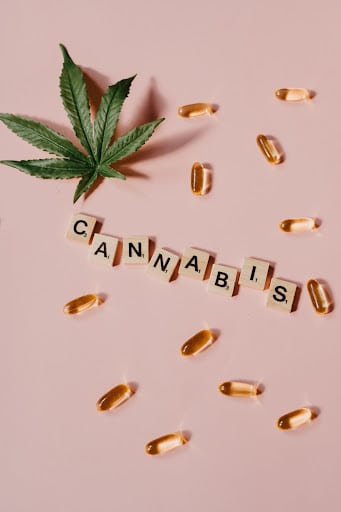
What’s the Best Way to Use Cannabis for Relief?
What method of ingestion works best for you? If you ask budtenders, friends, or people on internet forums, they will likely recommend what has worked best for them—and that may not match your needs.
Also, high-quality cannabis and CBD hemp products can be expensive. Many of us cannot afford to spend a lot of money testing different options that may or may not work.
Our Leaf411 cannabis-trained nurses have extensive knowledge on how to best use cannabis and CBD hemp for specific conditions. We provide balanced guidance and education that takes into account your individual needs, whether you have a limited budget, live someplace where you cannot access state legal cannabis, or are trying to find alternatives to conventional medications.
The Leaf411 cannabis nurse hotline provides education and directional support to the general public about the safe use of legal cannabis. We partner with select business members who meet our rigorous standards to extend our education and outreach efforts.
Cannabis Vaping Update: Are Vapes Safe in 2022?
Three years following the vape lung disease outbreak, consumers should still use caution when selecting a cannabis vaping product
By Katherine Golden, RN
Understanding the Vape Crisis
Our mission at Leaf411 is to provide balanced information and guidance for the safe and effective use of cannabis. When thousands of U.S. citizens became ill and hospitalized with a lung injury associated with vaping in 2019, consumer concern about cannabis vaping increased dramatically. The illness, which became known as “e-cigarette or vaping use-associated lung injury” (or EVALI) resulted in 68 reported deaths by February 2020. Researchers determined the likely cause of the illness was additives in the vape cartridges. This included additives like vitamin E acetate, MCT oil and others that were being used in some THC-containing vape cartridges, primarily in the illicit market. Leaf411 wrote about the issue at the height of the crisis to give consumers the best information on how to use vape products safely.
Today, the U.S. Centers for Disease Control (CDC) reports that emergency room visits due to EVALI have sharply declined. They cite increased public awareness of the issue, the removal of vitamin E acetate and other additives from products and a law enforcement crackdown on illicit products. However, that does not mean the risk to consumers has disappeared completely.
Tips for choosing a safe cannabis vape
Leaf411 wants to remind consumers to use vigilance and common sense when purchasing cannabis vape products to ensure they are only utilizing safe, legal products. The following are tips you should consider when purchasing a vape product:
- Purchase vape products only sold through state-licensed cannabis retailers or licensed delivery services–never from the illicit market. Licensed retailers are required by the state to have their products lab tested to ensure safety.
- Do not consume cartridge concentrates that contain additives such as Vitamin E acetate, polyethylene glycol (PEG), propylene glycol (PG), MCT oil, coconut oil or any other emulsifiers or synthetic agents. While some of these ingredients are safe to eat, they are not safe to vaporize and inhale.
- Only consume concentrates that are third-party lab tested and designed specifically for vaping.
- Ask the dispensary retailer or product manufacturer to provide the certificates of analysis (COA) for the products purchased. The lab results on a COA include the cannabinoid profile, pesticide testing and other critical information about the contents of the cartridge. Budtenders, clinicians and Leaf411 nurses can help answer your questions about the COA.
Remember that the vast majority of products implicated in vape-related illnesses and deaths were purchased from illegal vendors. In addition to problematic additives, many illicit vape pods and cartridges were found to contain dangerous synthetic marijuana instead of actual CBD or THC. So never buy vape products sold through illegal market sources or from non-licensed dispensaries. These products are likely not tested and can be easily counterfeited. To find a trusted manufacturer or dispensary, please review the Leaf411 member directory.
The Leaf411 cannabis nurse hotline, chat and scheduled nurse guidance call services provide education and directional support to the general public about the safe use of legal cannabis. We partner with select business members who meet our rigorous standards to extend our education and outreach efforts.
How to Use Cannabis
From Edibles to Vapes, Leaf411 Has Your Questions Covered
by Katherine Golden, RN – Founder and CEO of Leaf411
You have options when using cannabis
When we first started taking calls on the hotline, one of the biggest surprises was hearing how many people thought cannabis has to be smoked to be effective. In fact, we even featured this misconception as our first Question of the Month back in 2019!
Many different types of cannabis and CBD hemp products are available today. These different products are designed to fit a wide variety of needs. You should consider factors such as how quickly a product will take effect, how long the effect will last, and what issues you’re targeting.
Our cannabis-trained registered nurses are always happy to answer your questions. Give us a call at 844-LEAF411 (844-532-3411) or schedule a one on one call through our scheduling link.
In our guide below, we provide information on different options for using cannabis and CBD products. You’ll also find tips for getting the right dose of this plant-based medicine.
Tinctures
CBD hemp oil tinctures contain full spectrum, broad spectrum or CBD isolate in a plant-based carrier oil. If you’re purchasing a tincture through a dispensary, read the label. Some of these tinctures may contain the medical yet psychoactive cannabinoid THC.
Tinctures are available in different strengths and typically come in dropper bottles, making it easy to adjust your dose. They can be used by placing drops under your tongue. Some of the plant compounds will be absorbed directly into your bloodstream as a sublingual if the product is designed that way. That being said, most of the product is absorbed through swallowing. Tinctures also work well mixed into already prepared foods like sauces and soups, or warm beverages like coffee or tea. Tinctures are only for oral consumption.
When it comes to tinctures, think of the carrier oil as the vehicle that the cannabinoids travel in to enter your system.
Coconut or palm medium chain triglyceride (MCT) oil are both highly effective. These are the most common carriers for tinctures because they contain smaller fatty acid molecules which are easily absorbed.
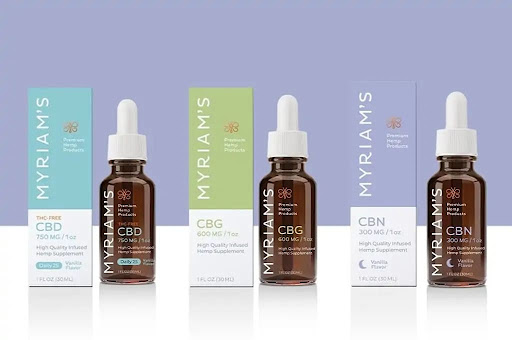
Myriam’s Hemp Tincture (MCT oil carrier)
Tablets & Capsules
Tablets and capsules containing THC or CBD provide a discrete, highly portable option. Soft gel capsules contain THC and CBD hemp in carrier oil, similar to tinctures. The carrier oil becomes especially important in these products, impacting how much of the CBD will be absorbed after the soft gel enters the digestive system. Capsules containing MCT oil or olive oil are especially effective.
Tablets are another popular option for using cannabis or CBD. This option is great because it resembles medications that patients are used to, like ibuprofen. Tablets and capsules are easy to use, discreet and familiar.
There are also sublingual tablets that dissolve under your tongue. Sublingual tablets work faster than swallowed pills since they are designed to be absorbed directly into the bloodstream.
Edibles
Edibles are a broad category containing anything…edible. This includes gummies, mints, chocolate, infused beverages and more.
Edibles face challenges moving through our digestive system. The THC, CBD and other plant compounds in edibles take time to reach the endocannabinoid’s CB1 and CB2 receptors via the intestinal tract.
When someone eats THC, only 4% to 12% gets into their bloodstream. Eating a meal also affects the absorption of cannabinoids. A study from pharmacologists at the University of Minnesota examined how eating a meal affects the absorption of CBD.
Also, edibles take longer to kick in. Many new users quickly decide that a single dose didn’t work and eat more. This can lead to an unwanted “high” several hours later when multiple doses suddenly take effect. We suggest that you wait at least two hours after eating an edible dose before deciding whether you need more.
Also, double-check the product label for dosage. In the non-cannabis realm, we’re used to the idea that one candy bar equals one serving. However, when it comes to products containing THC or CBD, the serving size is often a lot smaller.
Topicals
Topicals encompass a rapidly growing category that includes creams, gels, salves, and beauty products. The name implies that they are topically applied to your skin.
CBD topicals may work well for you if you are concerned about medication interactions. It’s also a popular option for people with arthritis who are seeking spot relief, as well as athletes looking for post-workout recovery.
Topicals that combine CBD and THC are a popular choice, as well as THC-only products. These are only available at dispensaries in states that have legalized cannabis.
Many of these products include a blend of essential oils and plant terpenes designed for localized pain relief, inflammation or improved pleasure with intimacy. THC topicals may include bath salts, massage oils, and creams. The cannabinoids in topical products interact with CB2 receptors in your skin but are not absorbed deeply enough to impact CB1 receptors. This means that they are very unlikely to deliver impairing effects. One exception to this is when topicals containing THC are considered “transdermal” or applied to mucous membranes. This includes mouth, nostrils, vulva or rectal tissues. Read more on transdermal products below.
Transdermal Patches and Pens
You might think that transdermal patches or gels are topical, since the medicine is absorbed into your skin. However, transdermal products provide a unique delivery through the skin. This method provides controlled release of cannabinoids directly into the bloodstream over a set period of time.
Transdermal drug delivery has a great advantage over oral administration. It avoids digestion and absorption of the gastrointestinal tract. As a result, transdermal delivery largely reduces drug toxicity and bypasses the first effect of drug absorption. This means more cannabinoids make their way into your bloodstream.
Mary's Medicinals Transdermal Gel Pen
Inhaling cannabis and CBD Hemp Flower
For many people, the first image that comes to mind when they hear “cannabis” is the plant flower that is smoked. In fact, the odds are that if you’re over the age of 30, your first experience with cannabis was smoking plant flower.
The cannabis plant has been smoked by humans since ancient times. Its status as an illegal substance in the United States is a tiny blip in time, when compared to its use throughout history. For many people, cannabis or CBD hemp flower remain their top choice for consumption.
Seed & Smith’s Mimosa (Clementine x Purple Punch) strain is good for relaxation.
Cannabis flower and CBD hemp flower is minimally processed and provides a range of plant benefits. Many different flower strains are available in the states with legal cannabis. Cannabis strains (chemovars) offer different ratios of THC, CBD and other cannabinoids. In addition, cannabis and hemp flower strains provide a range of terpene profiles that can add to the plant’s synergistic entourage effect.
Inhaling cannabis or CBD hemp flower, whether through smoking or vaping, provides a quick onset of the plant’s benefits. Smoking is also an integral part of cannabis culture used as a ritual for communities to come together socially.
Flower can be smoked with a bong or water pipe, with the flower placed into a bowl and ignited by flame. The smoke then passes through water, which cools it before being inhaled. Flower may also be smoked with a pipe.
You can roll cannabis flower into joints or buy pre-rolled joints. Pre-rolls provide a cheaper, easier option for sampling different strains.
Pay attention to any added ingredients as well. Some pre-rolls include added hash oil or kief to increase potency.
When you put a flame on a joint or bowl, you heat the flower to a point where the plant cannabinoids and terpenes combust into smoke so they can be inhaled. However, you’re also creating other combustion byproducts that carry their own side effects. While smoking is effective, it carries more risks and side effects than other methods of consumption.
Vaping cannabis and CBD Hemp
Vaping provides many of the benefits of smoking cannabis, without the concerns about combustion-related byproducts.
That being said, vaping-associated illnesses were in the headlines throughout much of 2019. The source of illness was narrowed down to illegal market vape cartridges which often contained vitamin E acetate or other contaminants. We previously shared our insights into the crisis in this blog post.
At Leaf411, we believe that vaping flower can provide a highly effective, fast-acting option for some people in need of a treatment option for pain or anxiety/panic attacks. However, we encourage you to seek advice from a qualified cannabis clinician for specific dosing recommendations.
Desktop and portable dry herb vaporizers are designed specifically for flower. These vapes don’t ignite the plant material with flame. Instead, they cook it, releasing the cannabinoids and terpenes in a vapor mist instead of smoke. This creates a smoother inhalation experience. Many dry herb vaporizers also let the user control the temperature, which impacts which cannabinoids and terpenes are released.
Although most medical practitioners will suggest only vaping flower, reputable vape oil devices can provide an even more customized experience, with a wide range of products available. Some vapes even connect to smartphone apps, much like a FitBit, allowing you to track your favorite products, temperature ranges and doses.
A word of caution, vape cartridges may also contain additional additives and thinning agents to improve performance in vape devices. It’s important to check vape cartridge ingredients to ensure that the cartridge doesn’t contain vitamin E acetate, polyethylene glycol (PEG), propylene glycol (PG), MCT oil, coconut oil or any other emulsifiers or synthetic agents. You can find additional tips for selecting a safe vape here.
The Leaf411 cannabis nurse hotline provides education and directional support to the general public about the safe use of legal cannabis. We partner with select business members who meet our rigorous standards to extend our education and outreach efforts.

